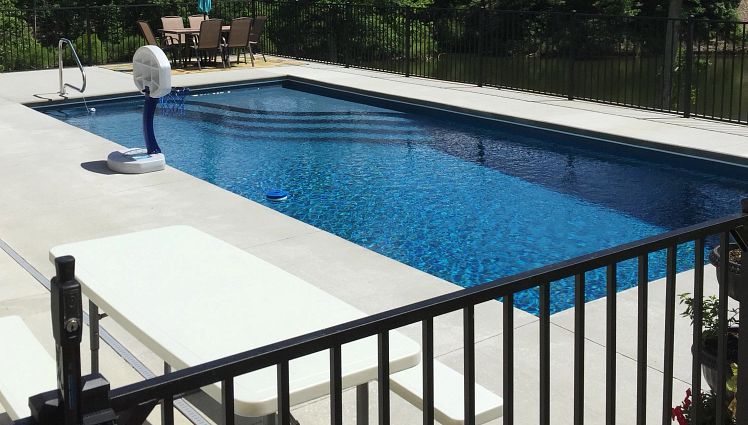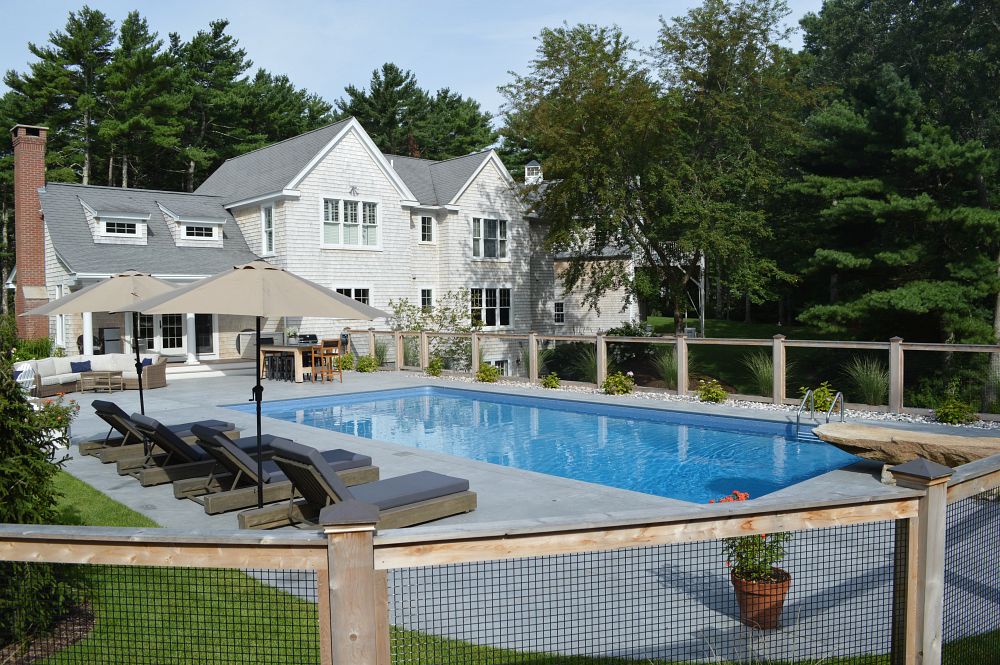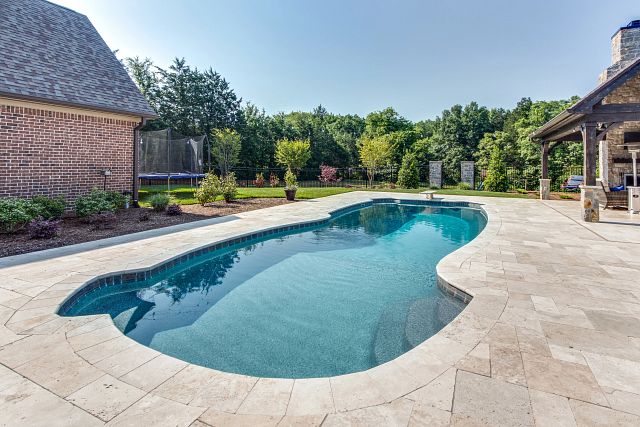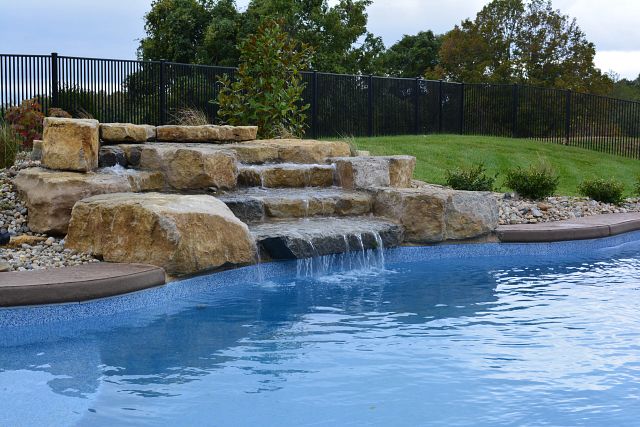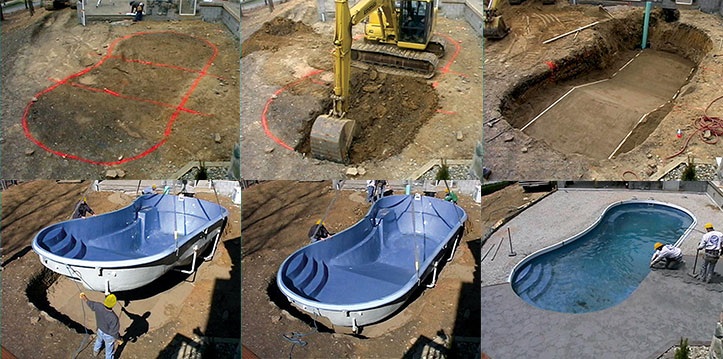What is Water Safety?
When it comes to protecting your children, you can never take too many precautions. With summer approaching and bringing with it endless get-togethers with family and friends, it’s always a good idea to revisit a mental, if not physical, checklist to ensure all potential drowning hazards are addressed. As a responsible adult, it’s your job to make sure everyone stays safe around water and swimming pools – especially children.
Water safety for kids involves more than just keeping a watchful eye on children in and around the pool area. It also includes making sure kids using the pool have the appropriate accessories (such as life jackets or swimmies – sometimes called “arm floaties”), depending on their age and swimming skill level. Water safety for kids also includes taking the right preventative measures to keep kids away from the pool when an adult is not present to supervise.
Owning a pool can act as a homing beacon for kids in your neighborhood. To be sure everyone who uses your pool stays safe, it’s important to get familiar with your city, state, and municipality’s requirements for pool safety. While there are some general tips and best practices we’ll share here, pool owners should further explore regional requirements to help keep kids safe. Let’s dive in!
How Do You Stop Kids From Getting in the Pool?
Gates and fences: This is your first line of defense against young wandering eyes and feet. Simply put, if your child can’t physically get to the pool, it doesn’t present a danger. According to the U.S. Consumer Product Safety Commission (CPSC), nearly 400 children die every year from pool or spa-related accidents—most of which are completely preventable. A proper gate stands at the right height and contains no holes or large gaps through which toddlers can slip. You also want one with a self-closing mechanism to avoid accidents caused by forgetting to close the door behind you.
According to the CPSC, fencing around your pool should be a minimum of 4 feet high, although 5 feet is preferable in order to help prevent young children from using the pool unaccompanied. While these are the national recommendations, different areas have specific codes for pool fencing that must be followed in order to be compliant. Please be sure to investigate any local and regional requirements in your area to be sure your pool meets all safety codes.
Proper fencing or gating should not have handholds or footholds that others can use to hoist themselves up over the fence. For this reason, consider fencing with metal vertical bars as opposed to chain-link fencing. Spacing between vertical bars should not be wider than 4 inches. Anything larger might allow a small child to squeeze through.
If you do have a chain link fence as your pool barrier, the mesh openings should not be more than 1.25 inches unless slats are woven and fastened at the top and bottom of the fence to reduce the size of the openings, preventing little hands and feet from using the mesh as a foothold.
Wooden or vinyl picket fences can also be an option for a pool barrier, however, any crossbars or horizontal beams supporting the vertical slats should be on the inside of the fence to prevent a child from using them as a foothold and trying to climb the fence. As mentioned previously, spacing between vertical slats should be no wider than 4 inches to prevent small children from getting through.
Similarly, solid fencing or gating (such as wood or brick) at the regulation height can also help to prevent young children from scaling the wall and using the pool without adult supervision.
Please note that these are more overarching CPSC guidelines and that pool owners should brush up on local and regional pool codes to be sure your pool is compliant. Some localities have even more stringent requirements than those recommended by the CPSC. When it comes to pool safety for kids, there is no such thing as being too careful.
Safety covers: Installing a pool safety cover is a worthwhile investment for households with young children. Pool covers vary greatly in terms of size, durability, and cost. But automatic covers are best as they require no more than the push of a button to offer complete protection from accidents. If that’s not within your budget, consider a solid or mesh cover to be placed over the pool manually between use and during the winter months. The key takeaways here are that the cover is securely anchored, thick enough to withstand intrusion, and always monitored for water pooling as the surface of the cover can be just as dangerous as the water underneath.
Pool safety covers do more than just protect your backyard investment. They’re designed to help save lives and help avoid preventable accidents. Having your pool cover certified and installed by a professional can offer you added peace of mind.
In recent years, some states allow an automatic pool cover instead of a fence for inground pools and spas. Understanding the proper regulations and looking to a certified pool professional to install your pool cover is essential to staying compliant with local laws, but also to preventing children from accidentally falling into your pool. It’s also important to gain an understanding of your state and local laws regarding pool covers and fencing requirements, as these can differ by area.
Locks and alarms: Doors and windows leading to the backyard must also be secured with child safety locks for a 360 degree approach to pool safety. Most houses equipped with an alarm system allow for in-home alerts when perimeter doors are opened. To take it a step further, consider an auto cover that comes with a security code and key that only adults should have access to. This way they’re the only ones who open/close it when they have line of sight of the pool. Beyond the installation though, it’s crucial that you actually use the locks 100% of the time and stress to babysitters, housekeepers, and visitors to do the same. Pool owners should also consider investing in an alarm for the pool as a last resort that will notify you if someone jumps in.
What Are The Safety Rules While in a Swimming Pool?
While not exhaustive, checking these child pool safety tasks off your To-Do list will ensure a safe environment for children and leave you with a sense of peace and control.
- Do not leave children unattended near the pool.
- Post clear signs or stickers warning kids not to run near the pool. Slick surfaces mean someone could slip and fall into the pool.
- Post “no diving” signs or stickers near the shallow end of the pool.
- Have flotation devices on-hand that are light enough for even a small child to toss into the water.
- Make sure young swimmers wear either inflatable floaties on their arms or a life vest when in the pool.
- When possible, make sure young children always swim with a partner, even with adult supervision. If something happens, the other child can alert an adult immediately.
- Make sure all children know they must tell an adult before they get in the pool. This ensures an adult is able to keep an eye on them with no distractions.
- No dunking other kids in the pool. Splashing around is one thing, but submerging another pal in the pool can be potentially dangerous. Be sure children know that dunking others will not be tolerated in order to keep your pool a safe and fun place for everyone.
Not only is pool safety the responsibility of all teenagers and adults; in most states it’s the law. Practice common sense and follow the advice of pool care professionals who warn against the dangers of unsecured homes and yards.
Commonly Asked Water Safety Questions
Having a pool in your backyard isn’t just fun, it’s a privilege. And part of that privilege is making sure everyone who uses your pool stays safe. Here are some of the top questions we hear around drowning prevention and water safety.
How Do I Make My Pool Safer?
One of the top ways to make your pool safer for kids is making sure that you have the proper, regulation-height fencing and pool covers to be sure no one uses the pool without adult supervision. While CPSC guidelines offer up safety and fencing requirements for pools at a national level, be sure to look into your state, city, and local requirements to be sure you’re compliant. Installing a pool alarm can also be helpful in preventing any accidents from happening.
In addition to installing a pool cover and fencing, consider adding pool lighting to better illuminate your pool area at night and for better visibility when children are in the water after dark.
Pool safety for kids doesn’t just mean keeping a watchful eye on them in the water or preventing them from using the pool unaccompanied. It also involves testing the water chemistry of your pool to be sure it’s at a safe level. Regular testing of your pool water can help prevent skin irritation, as young children’s delicate skin may be more sensitive to harsh chemicals and unbalanced water.
What Do You Teach Children About Water Safety?
When it comes to swimming pool child safety, it’s important to start as early as possible to teach kids how to stay safe while in a pool. Start by taking them for swimming lessons and getting them comfortable with the water. Beyond just knowing swimming basics, children should know how to get in – and out – of a pool.
However, it’s equally important to be sure that kids take the proper precautions – even if they are confident young swimmers. Instruct them to always tell an adult before getting in the pool and to use the proper floatation devices when in the water.
How Do I Keep My Toddler Safe in the Pool?
Toddlers move fast and don’t always pay attention to pool safety. Although you may set the rules that your child must tell you before they get in the pool, a toddler may take off on their own. A key element of toddler pool safety is to make sure they are always wearing a floating life vest or arm swimmies as a safety precaution in case they do get into the pool outside of your watchful eye.
Another way to make your pool safe for toddlers and babies is to always stay within arm’s reach of your child when they’re in the pool. Even if they’ve just started swimming lessons and feel confident, making sure you are within an arm’s distance of your toddler can allow you to move quickly, if needed.
The Most Important Part of Water Safety for Kids
A swimming pool can help create a lifetime of happy backyard memories for you and your family. To make sure little ones stay safe while enjoying the pool is part of your responsibility as your pool owner. Making sure your pool and its surrounding barriers, fencing, or pool covers are up-to-code is a great starting point. So are setting clear rules and boundaries with children and toddlers around what behaviors are permitted on or around the pool. However, the most important part of water safety is that a trusted adult is monitoring at all times when children are near or in the pool.
For more tips on creating a safe and fun environment, check out our Pool Safety Guide.
